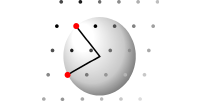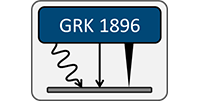Current Events:
-
2nd Erlangen School on Atom Probe Tomography
4. - 8. March 2019
Institute I, Materials Science and Engineering -
GRK 1896 Springschool
18. - 20. March 2019
Pommelsbrunn -
Symposium "Correlative and in situ microscopy in materials research"
1. - 4. April 2019
DPG Frühjahrstagung, Regensburg -
5th CENEM Summer School for X-ray Scattering
29. July - 1. Aug. 2019
Institute for Crystallography and Structural Physics (ICSP)
Electron Microscopy Facility
The Intistute of Micro- and Nanostructure Research together with CENEM own three transmission electron microscopes (TEM) with various TEM specimen holders, a scanning electron microscope / focused ion beam SEM/FIB Dualbeam System and a broadly equipped sample preparation laboratory. With the expertise of the staff and this equipment high-end research can be performed in the huge field of electron microscopy. Detailed information about the various TEMs, their accessories, the sample preparation as well as the FIB can be found below.
Transmission Electron Microscopes
FEI Titan Themis3 300
The Titan Themis3 300 is our high-end TEM providing high-resolution imaging as well as high performance analytical investigation capabilities. This double-aberration-corrected TEM corrects both the image and the probe forming system enabling high-resolution imaging in TEM as well as scanning TEM (STEM) mode resulting in resolution limits below 1 Å for both modes for all high tensions between 60 kV and 300 kV. The high brightness electron gun (X-FEG) equipped with a monochromator to improve the energy resolution in combination with a high-sensitivity SDD X-ray spectrometer (Super-X) and a high-resolution post-column energy filter (GIF Quantum) creates a high performance analytical instrument perfectly suited for the nanoanalytical characterization of all kinds of materials and devices. Energy filtered TEM (EFTEM) imaging, high-resolution electron energy-loss spectroscopy (EELS) as well as energy-dispersive X-ray spectroscopy (EDXS) yield chemical, elemental as well as bonding information even down to the atomic scale. Additionally information about local band gaps and plasmonics are gained by monochromated low-loss EELS investigations. Furthermore the Titan Themis3 300 is used to perform advanced in situ experiments using special TEM specimen holders. A further advanced method available at the Titan Themis3 300 is electron tomography enabling the analytical characterization of materials and devices in 3 dimensions. This high-end analytical TEM is used to answer the most complex questions regarding materials science.
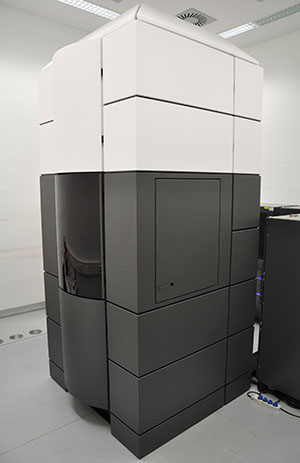
- X-FEG emitter
- High tension: 60-300kV
- Monochromator, energy resolution 0.2 eV
- Probe Cs corrector (CEOS)
- Image Cs corrector (CEOS)
- Point resolution for TEM and STEM: 70 pm
- Gatan imaging filter (GIF Quantum ERS system)
- Super-X detector (EDXS)
- BF, ADF and HAADF detectors
- 4k CMOS camera
- Videocamera
- Tomography software
Philips CM30 TEM/STEM
The Philips CM30 TEM/STEM is used for several in situ experiments to investigate on the one hand temperature dependent properties and mechanisms by heating and cooling experiments and on the other hand to investigate elastic and plastic properties by nanomechanical testing. Furthermore advanced conventional techniques are performed on the CM30 like e.g. large angle convergent beam electron diffraction (LACBED) for crystallographic analyses. For high contrast applications the imaging plates are used to obtain improved diffraction patterns.
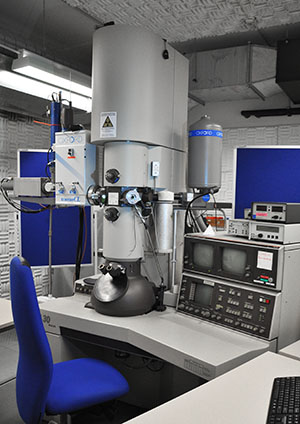
- LaB6 cathode
- High tension: 150-300kV
- Twin objective lens (Cs = 2 mm)
- Point resolution (Scherzer): 0.23 nm
- 1k x 1k CCD camera (Tietz FastScan-F114)
- EDXS detector (Oxford)
- CL system (Oxford)
- Imaging Plates
SEM/FIB Dualbeam System
FEI Helios NanoLab 660
The FEI Helios NanoLab 660 dualbeam System combines ultra-high resolution SEM imaging with extremely precise FIB milling. Having 8 different detectors, the instrument is capable of resolving a large variety of signals like secondary electrons, x-rays, and secondary ions. Using the Ga-ion FIB material can be removed with nanometer precision to prepare site-specific cross-sections, TEM lamellae or structures for mechanical tests. Three different gas injection systems are available that can be used for different purposes. Carbon and Platinum can be deposited in order to protect a surface or to do circuit editing, while XeF2 can be used for ion-less milling of certain materials. In addition Two micro-manipulators are available for lift-out procedures, sample transfers and mechanical or electrical probing.

- Ultra-high resolution ElstarTM electron column with monochromator
- Resolution ~1 nm at 1-30 kV
- Retractable STEM and different SE & BSE detectors for advanced imaging contrasts
- High-resolution TomahawkTM ion column
- Gas Injection System for Pt, C and XeF2
- EasyLift NanoManipulator
- Kleindiek micromanipulator
- Oxford X-MaxN EDX detector (150 mm2 SDD)
- In-chamber plasma cleaner
TEM specimen holders
Several TEM specimen holders are available to enable a variety of different experiments. Several single tilt, double tilt and rotation holders allow any orientation of the specimen inside the TEM. A vacuum transfer holder can be used for specimens sensitive to ambient air. Cooling and heating holders enable the investigation of temperature dependent properties and mechanisms like e.g. phase transitions. The MEMS based heating holders improve the performance of the TEM investigation as only a minimum area of the holder is heated controlled. The cooling holder can be used for beam sensitive specimens to improve specimen stability. For electron tomographic investigations two tomography holders are available. The 360° tomography holder enables reconstructions without the missing wedge artifact. Special in situ holders like the PicoIndenter, the TEM-STM and TEM-AFM holders enable advanced in situ investigations regarding nanomechanical testing, force measurements as well as measurements of the electrical properties.

- Single tilt holders (FEI)
- Double tilt holders (FEI)
- Rotation holder (Philips)
- Vacuum transfer holder(Gatan)
- LN2 cooling holder (-170 °C) (Gatan)
- Helium cooling holder (-253 °C)
- Single tilt heating holder, MEMS based (DENSsolutions)
- Double tilt heating holder, MEMS based (DENSsolutions)
- Tomography holder (FEI)
- 360° Tomography holder (Fishione)
- PI 95 TEM PicoIndenter (Hysitron)
- TEM-STMTM holder (Nanofactory)
- TEM-AFMTM holder (Nanofactory)
Sample Preparation
As the quality of the sample is a crucial and important factor for the TEM investigation, several different machines are available for the wide range of user needs regarding the sample preparation. Mechanical methods like grinding, dimpling and polishing can be used for bulk material removal and geometrically precise polishing techniques. Ion beam instruments offer final milling as well as cleaning methods. Soft materials can be prepared in the cryo-ultramicrotome either at ambient or at cryo-temperatures. Additional equipment like wire saws, coating machines, evaporators, spin coater, ovens are available as well as a glove box, a plasma cleaner and various light microscopes.
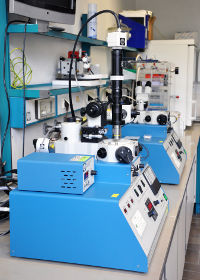
- Ion Polishing Systems (2 Gatan PIPS, one with low-energy ion guns and LN2 cooling)
- Various grinding machines (Struers)
- Multiprep (Allied)
- Minimet (Bruehler)
- Wire Saw (Well)
- Dimpling machines (Gatan)
- Coating machine
- Evaporators
- Spin coater (Laurell)
- Cryo-ultramicrotome (Leica)
- Different ovens
- Various light microscopes (Zeiss with Leica CCD-camera)
- Stereo microscope (Leica M80)
- Plasma Cleaner (Fishione)
- Glove Box






